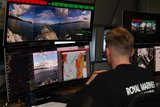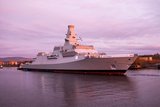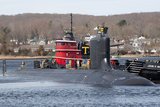OSI systems for South African vessels
OSI Maritime Systems has signed a contract with Damen Shipyards Cape Town (DSCT) to support the South African Navy’s Project BIRO, the company announced on 5 June.
The contract will see OSI deliver and install its Integrated Navigation and Tactical system, Tactical Asset Control and Tracking system and Integrated Mission Management system for three multi-mission inshore patrol vessels that are being built for the navy by DSCT.
OSI’s systems will be integrated with South African-specific sensors and data links that will offer blue-force tactical information to allow the command to build, manage and participate in a recognised maritime picture.
Project BIRO aims to develop South Africa’s maritime security to ensure the country has the capability to respond effectively, rapidly and cost-efficiently to maritime threats including illegal trafficking and fishing.
More from Naval Warfare
-
![Thales’ new Sonar 76Nano could equip UK Royal Navy on anti-submarine warfare missions]()
Thales’ new Sonar 76Nano could equip UK Royal Navy on anti-submarine warfare missions
The new sonar is designed to equip uncrewed underwater vessels, with the potential to be used by the Royal Navy for its Atlantic Bastion and Atlantic Net missions.
-
![Hanwha wins Australian government approval to increase its stake in Austal]()
Hanwha wins Australian government approval to increase its stake in Austal
The contract would mean the two shipbuilders can collaborate strategically and enhance shipbuilding capabilities in Western Australia.
-
![Royal Australian Navy sizes up modernisation plans for new and existing capabilities]()
Royal Australian Navy sizes up modernisation plans for new and existing capabilities
The Australian navy is pushing ahead with its efforts to modernise its workforce and capabilities while balancing risky submarine upgrades, ageing Collins-class boats and a shrinking minehunter fleet. Head of navy capability RAdm Stephen Hughes updated Shephard on the force’s progress.
-
![UK to join US Navy’s Virginia-class submarine assembly effort to speed up construction]()
UK to join US Navy’s Virginia-class submarine assembly effort to speed up construction
The expansion of the Virginia-class submarine construction to UK shores could accelerate the project as US shipbuilders continue to fall short of delivery goals.
-
![US Navy seeks new sensors for the CH-53K King Stallion heavy-lift helicopter]()
US Navy seeks new sensors for the CH-53K King Stallion heavy-lift helicopter
The US Navy intends to publish a draft request for proposals in Q2 2026 and conduct an open competition for the supply of new electro-optical and infrared capabilities for the CH-53K heavy-lift helicopter.
























